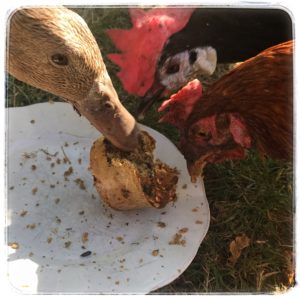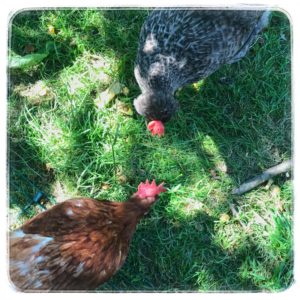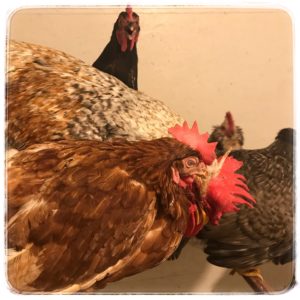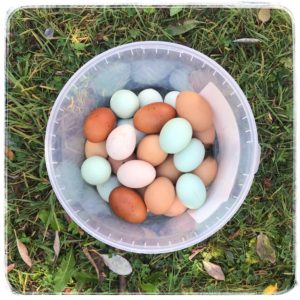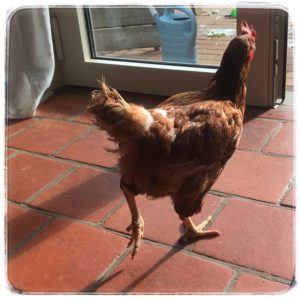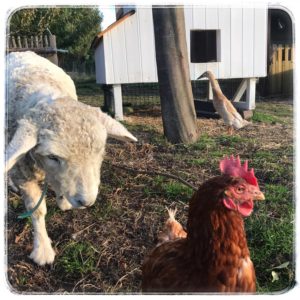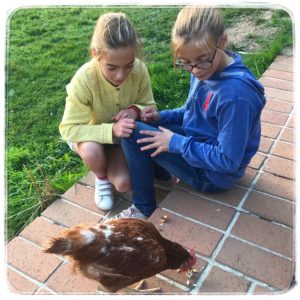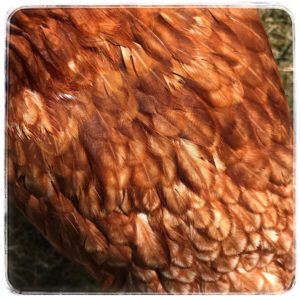
For most pet dogs meal time isn’t very challenging time of the day. Typically owners only put the food bowl down and leave them to it. If this suits you and your dog that’s absolutely fine, but they would without a doubt not have been served food in this way in the wild. Instead they would have had to scavenge and hunt for their meals, keeping both mind and body active. If you feel like you would like to challenge your dog and enrich their daily routine, then making some changes to their meal times can be a good start.
Adding more mental stimulation to your dog’s life can have several benefits. It keeps them busy and tires them out in a similar way to a long walk. Many dog owners forget about challenging their dogs mentally, and when they encounter problems with boredom and linked behavioural issues like chewing, pacing, jumping and barking, they just presume they need to increase the physical exercise. This helps, but it doesn’t satisfy your dog’s hunger for mental stimulation.
Mentally stimulated dogs are not as hyperactive, and they tend to adapt more easily to stress. This is useful if you’ve got a very worried pup who shows aggression towards other dogs walking past the house, struggles with separation anxiety or gets stressed during thunderstorms or fireworks.
Brain games are therefore a brilliant way of tiring your dog out for the evening, or before you leave for work in the morning. By combining this with their normal feeding time, it won’t take much longer than normal, and your dog will love the extra challenge. Additionally you don’t have to worry about giving your dog too many treats as they are rewarded with food they would have eaten anyway.
So what are some fun ways of mentally stimulating your dog during meal times?
The aim is that it should take your dog 10-15 minutes to finish their food. Make sure you supervise your dog the first few times you’re trying a new way of feeding.
Our first tip is nose work. Using their nose comes naturally to dogs, and searching for their food will definitely add stimulation to their daily routine. Scatter the food in the garden so that your dog will have to sniff around to find it. You can also do this indoors, but it might be good to choose a room that’s easy to clean and where the pieces of food won’t get stuck under furniture. If you want to make it even more challenging you can hide little heaps of food under a bush, on a window sill or behind some flower pots. If your dog doesn’t get the game, start with something that smells a bit more than their normal dry food.
Our second suggestion is puzzles and food dispensing toys. The Classic Kong is the most well known food dispensing toy, but you can also find treat balls and complicated puzzles that provide your dog with a harder challenge before they are rewarded with food. The idea with most of these is that your dog will have to move the toy around the floor or press certain parts of the toy to make the food fall out. Dogs absolutely love this, and as they get rewarded again and again it can keep them entertained for hours.
If you don’t want to buy toys you can make some yourself. Try putting the food in a cereal box and taping it shut, in a toilet roll with folded sides, or in a plastic bottle with some holes cut out where the food can fall out. This can get a bit messy, and definitely noisy, but it’s worth it when you see your dog running around trying to get into the box, tail wagging with excitement.
You can also use mealtime as an opportunity to practice tricks and teach your dog new ones. Don’t ask your dog to do the same tricks every meal time, as it will just become a part of the routine, and not challenging or mentally stimulating. By using this time for training you are able to give your dog more than just the one treat at a time, as it’s the food he or she is supposed to eat anyway. This will form a stronger positive association, and your dog might learn faster.
Another thing you can do to change the daily routine is to change the texture of the food. If your dog normally gets wet food, try freezing it into little discs or cubes that they will love crunching on. If your dog gets dry food you can mush it up with a bit of yoghurt or water. It’s all about novelty and enriching your dog’s daily routine!

This entry was posted in Dogs on April 25th, 2019 by linnearask
1. ”I’m thinking of selling the TV, I just watch the chickens anyway.”
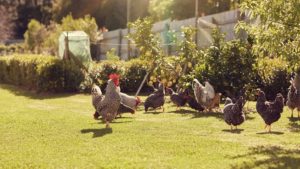
2. “I’m feeling a bit low today, so I’m just going to hang out with the chickens for a bit.”
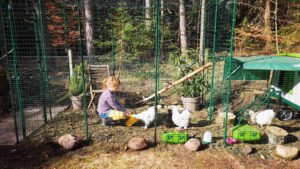
3. “Yes, we had a lovely holiday. But I spent most of it worrying about my chickens.”
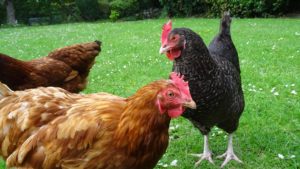
4. “Sorry I’m late, I just had to check on my chickens before I left.”
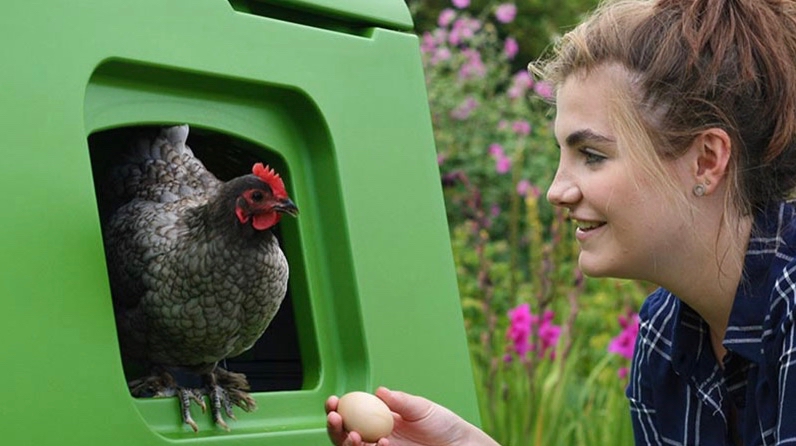
5. “I tried to have a lie in this morning, but my chickens were hungry.”
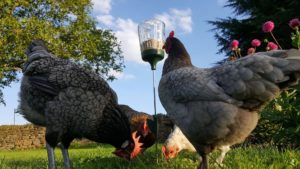
6. “A day when I don’t get to hug a chicken is not a day worth living.”
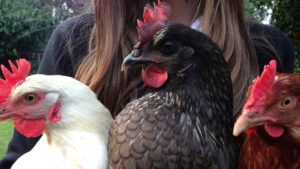
7. Colleagues: So, have you got any exciting plans for the weekend?
Me: Chickens.

8. Me then: 3 sounds like a good number of chickens.
Me now: ????????????

This entry was posted in Chickens on April 23rd, 2019 by linnearask
To celebrate the long Easter weekend we are giving you the chance to WIN a $200 Omlet gift voucher to spend on your pet. All you have to do is tell us how many rabbits are hidden in the image below… Head to the competition page here to submit your entry!
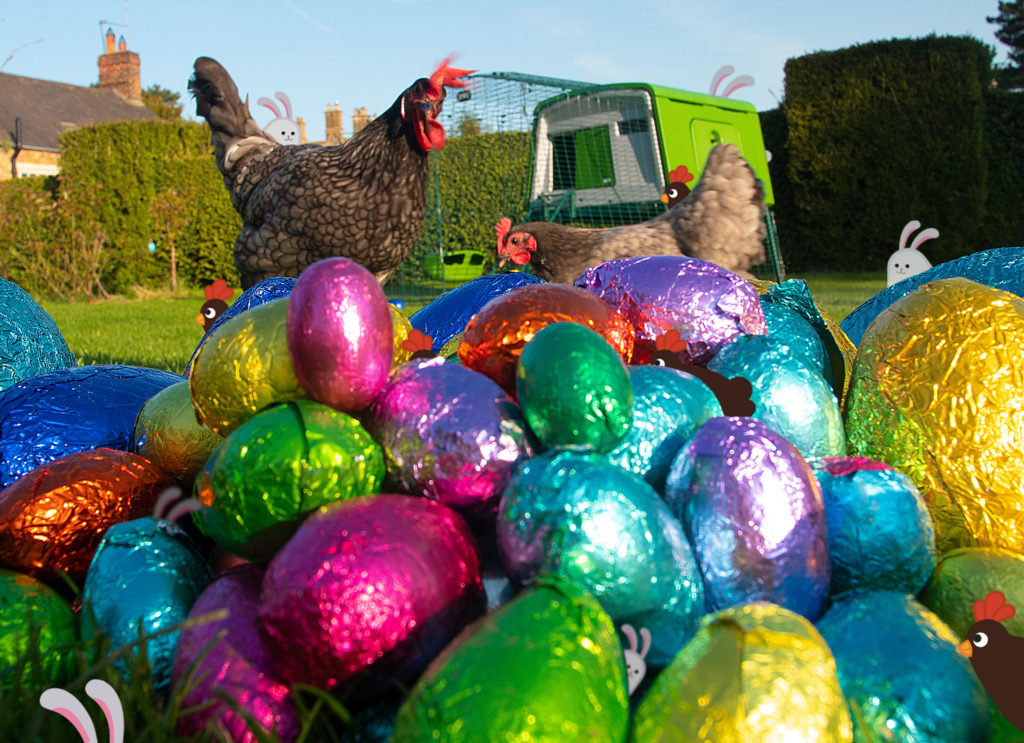
There will be 5 winners chosen from the Omlet community so don’t miss your chance to enter to win this amazing prize and a chance to treat your pet.
Terms and Conditions
This competition closes at midnight ACT on the 22nd of April 2019. To enter you must complete this competition entry page. There are 5 x $200 Omlet gift vouchers to giveaway. The winners will be randomly selected from all those entrants who have provided the correct answer and notified within 7 days of the competition closing. The 5 winners will be notified via the email address you provide when entering the competition. If we do not get a response to the email within 7 days, the prize will be offered to a runner-up.
Prizes cannot be transferred to cash. This competition is not open to Omlet employees or members of their immediate families. Likewise, it is not open to the Employees of Omlet Partners who may be involved in promoting this competition. Omlet may cancel or amend any competition, competition information, or these terms and conditions without prior notice. Any changes will be posted either within the competition information or these terms and conditions. No responsibility can be accepted for entries that are lost or delayed, or which are not received for any reason. No prize will be awarded where any entrant has committed any form of misconduct (as determined by Omlet in its sole discretion). Only one entry per household. Any personal information relating to entrants will be used solely by us in accordance with applicable data protection legislation. All prize-winners agree to participate in any reasonable post-competition publicity as requested by Omlet.
By signing up to the Omlet Newsletter, you will be the first to hear about offers, competitions, new products, recipes, pet advice and much much more! You can unsubscribe from the Omlet Newsletter at any time by clicking the link in the footer of our emails
This entry was posted in Competitions on April 18th, 2019 by chloewelch
You’ve seen it on some TV programmes or driven past small-holdings and seen canines and chooks living in harmony. Maybe they are a working dog? Maybe they are a family dog? How do they do it? We have put together 7 expert tips to help you introduce your new dog to a flock of chickens.
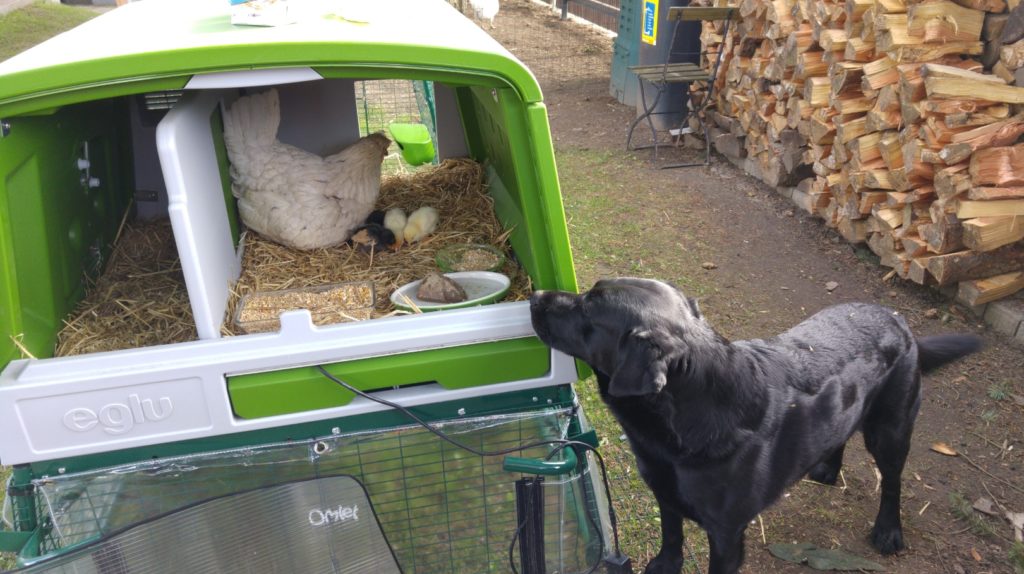
Understand How Dogs and Animals Learn
Our canine companions, on the whole, are super intelligent and trainable, providing we know how they learn and what we need to do to train them. Introducing them to our chooks can be done and co-habiting harmony does exist. It’s through this small thing we call desensitization. Stay with us for a short Psych 101 and we promise it’ll be worth it.
Desensitization is a process where, through graded exposure, an emotional response is diminished and adapted to a specific stimulus.
Now, what the heck does that mean I hear you yell?
In short, you expose your dog to your chooks, from a distance. As he behaves how you expect him to, you gradually move him closer to the chooks. You eventually get to the stage, that through the gradual exposure, he’s not that interested in the chooks after all. His emotional response has diminished, and he has adapted which results in a calm response.
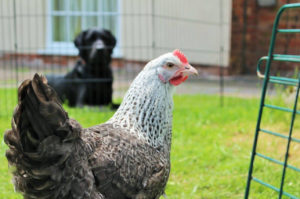
Stay Safe
Start with your chooks in their coop or a fenced in area. Keep your dog on leash and feed him treats, providing he is ignoring the chooks. If he is paying too much attention to them, move to a greater distance. The aim is to find a distance where he is not having any emotional response towards them.
Grade the Exposure
Providing your dog is ignoring the chooks at a certain distance, you can move gradually closer to them. Say you start at 50 feet away, slowly reduce to 45 feet, 40 feet and so on. Continue to praise and reward him for ignoring them. Remember, you want his emotional response to diminish. Keep training sessions short, you don’t want to over tire your dog. Some dogs get hyper-aroused just by being over-tired.
The Big Moment!
You’ve finally made it to near the chicken coop or fence, providing he is still pretty chilled out in ignorance of the chooks, ask him to sit next to the fence or coop. Praise and reward. If he behaves how you expect him to, lengthen the leash, so he can move around the border of the coop or fence, he can sniff and explore. If he’s calm, the chooks may even come over to investigate. Stay calm. If he starts getting excited or lunges/barks at them, remove him to a safe distance where he will ignore them again. You may need to do this a few times. What he learns is that to be around the chooks, I must stay calm. If your chooks will stay in a coop or fenced area, this may be where you spend the time repeating the behaviour and praising and rewarding. You may sit with him with a chew or just work on some commands. Again, the aim is to encourage him to ignore the chooks.
If you plan on having free range chickens, and canine and chooks will be mingling daily, read on.
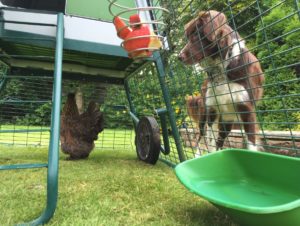 The Great Escape
The Great Escape
When you feel confident that your dog has so far, happily ignored the chooks and not shown any aggression or heightened arousal towards them, you can let them out of their coop/area to roam freely. Keep your dog on his leash. Ask him to sit or lay down if this makes you feel more comfortable. As the chooks are roaming, providing your dog shows little interest, praise and reward him. Again, you may want to give him a chew or even a slow feeding puzzle game. He just needs to learn than he can co-exist with the chickens without interacting with them a great deal.
Patience Is A Virtue
You may have to spend a significant amount of time working through these steps, but done in the right way, it will be worth it. Whilst on leash you can walk him through the chooks, he may sniff, they may also show interest too. The only behaviour you don’t want to see is aggression, lunging or chasing. If this happens, go straight back to beginning and work on the gradual exposure again.
Riding Solo?
The most nerve-wracking part will likely be when you feel he is ready to be let off leash to mingle on his own. Again, take your time. You may pop the chickens back in the coop and let him explore off leash around a fence. You may prefer to put him on a long line (50ft) when in with the free-range chooks. This way, he feels like he has more freedom, but you still have control if it goes pear shaped. Be realistic though, some dogs just never quite make it to being able to mingle unsupervised with chooks, so watch the behaviour of your dog and make the call.
Conclusion
Chooks to dogs are super-interesting, like most things. The long and the short of it, successful introductions mean the chooks are no longer that interesting and your dog learns that to be around them he simply just needs to be calm. Arm yourself with some high value treats, chews and any other slow feeder puzzles; start from a distance and encourage the behaviour you want to see. Praise and reward when you do. Grade the exposure. Always stay calm and in control and don’t be afraid of going back to square one if things don’t go as you’d hoped. It may take time, but it will be worth it when you have canine and chooks living in harmony.
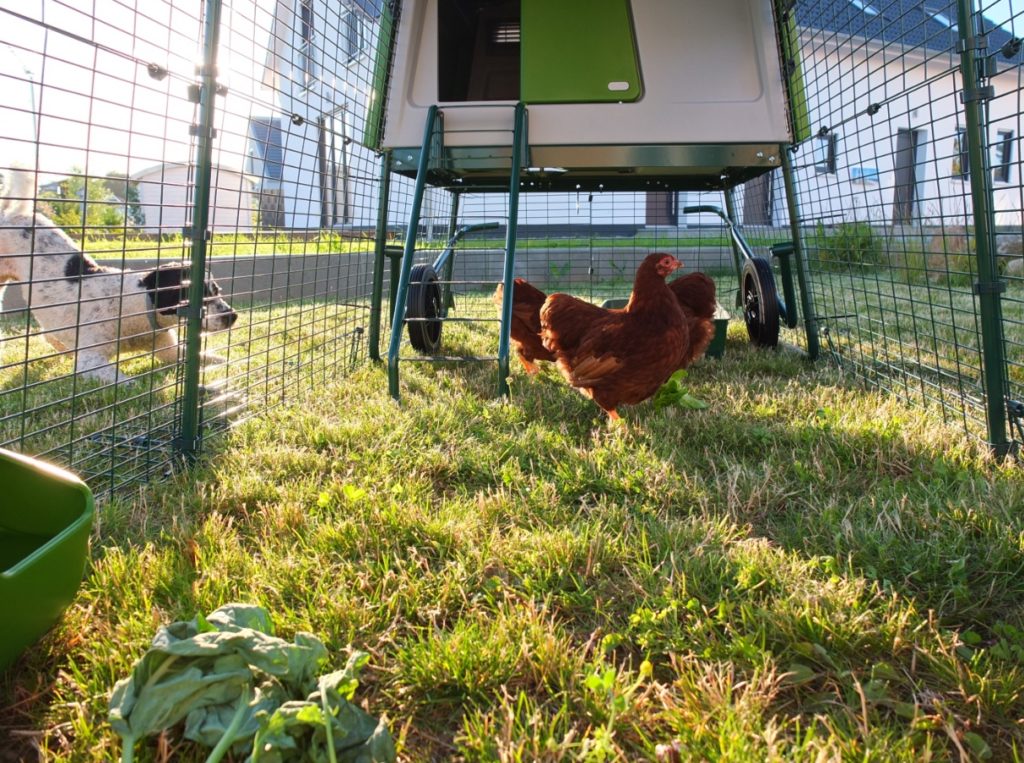
 This post was written by John Wood at All Things Dogs.
This post was written by John Wood at All Things Dogs.
This entry was posted in Chickens on April 15th, 2019 by linnearask

INGREDIENTS
Carrot Cake:
- 175g dark brown sugar
- 175g caster sugar
- 150g softened butter (unsalted)
- 100g natural yoghurt
- 1 1/2 teaspoons ground cinnamon
- 1 1/2 teaspoons mixed spice
- 1 teaspoon vanilla
- 1/2 teaspoon salt
- 3 medium-sized eggs
- 300g shredded carrots
- 3cm fresh ginger
- 180g self-raising flour (sifted)
- 1 teaspoon baking soda
For the Icing:
- 50g icing sugar
- 200g cream cheese
- 1 lime
- 100g walnuts
METHOD
1) Heat oven to 170 degrees. Line bottom and sides of two 20 cm round springform pans with parchment paper, then lightly spray pan with cooking spray. Whisk butter (room temperature), yoghurt, caster and dark brown sugar, vanilla, cinnamon, mixed spice and salt. Add the eggs one at a time. Stir in the graded carrots and ginger. Use a spatula to fold in the sifted flour and baking soda.
2) Pour the mixture into the springform pans and bake for 55 minutes or until a skewer inserted into the centre comes out clean. If any wet mixture clings to the skewer, return to the oven for 5 mins and check again. Leave to cool in the tins for two hours.
3) To make the icing, beat the cream cheese, icing sugar and lime juice and zest together. Remove the cakes from the tins and sandwich together with half the icing. Top with the remaining icing and walnuts.
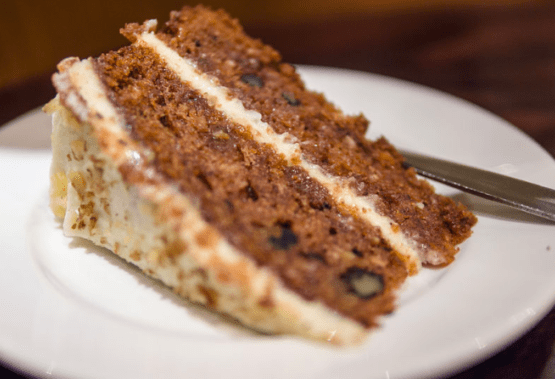
Freshly baked carrot cake will keep well for about 1 week in the fridge when properly stored.
Best eaten at room temperature.
This entry was posted in Recipes on April 15th, 2019 by chloewelch
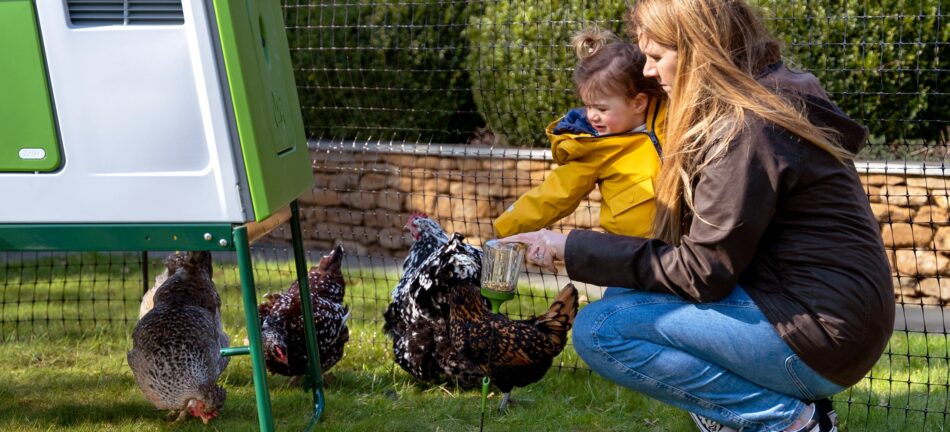
Wondering how to convince your family (or roommates) to let you get chickens? You aren’t alone. There are many misconceptions about chickens and their care that cause many people to baulk at the idea of owning them. But, like most reservations, most of these concerns are unfounded. Here is our best advice on how to get others on board with the idea of getting chickens. Bust common myths and put care concerns to rest — and you’ll soon have your entire household clamouring to keep chickens.
6 myths about keeping chickens
Debunking some common myths about keeping a flock will be your first step in convincing your family to let you get chickens. While this is not an exhaustive list, these are the main concerns raised when families consider keeping chickens.
Myth #1: Chickens smell bad
While it’s true that hens’ droppings smell, hens themselves have no odour. If their coops are kept clean there will be virtually no stench from your chickens’ setup. Our easy-to-clean chicken coops ensure that your hens’ home stays fresh and clean from just minutes of cleaning each day.
Your hens will keep themselves clean by preening their feathers and taking chicken dust baths. Choose odour-absorbing material like pine pellets, sand, or finely crushed rock for the base of your chickens’ run to eliminate any outdoor odours. Finally, use a pressure washer or soap and water on the interior surfaces of your chicken coop once a week, and you should experience little to no odour from your garden flock.
Myth #2: Chickens take up a lot of space
Depending on the breeds of chickens you keep, most of them don’t require much space. Of course, your flock will be happiest with the most space possible, but there are options that will make the best use of the space available. Mobile chicken coops allow you to move your hens’ home to the most convenient spot, or relocate them whenever you need to. Your flock can help you mow your grass, control the bug population, or enjoy shady areas through the use of a mobile chicken coop.
Don’t want your flock to have access to the entire garden? Chicken fencing or a walk-in chicken run enables you to customize your flock’s area within the space available in your garden.
Myth #3: Chickens are noisy
Most of the time, when people think of noisy chickens they conjure up the image of a crowing cockerel. While cockerels are in fact quite loud, hens make quiet noises that are not likely to disrupt the neighbourhood. Occasionally, hens may make louder sounds, but these are usually reserved as warning cries. When they “sound the alarm”, it’s usually because of a perceived threat.
Some breeds are more vocal than others, so if noise is a concern, it’s best to do some research beforehand. Faverolles, Polish, and Wyandottes are among some of the more boisterous breeds that you may want to avoid if noise is of concern. There are also some hens that will loudly proclaim that they have laid an egg. The ruckus is short-lived, but they will often get the entire flock going for a few minutes in a celebratory cheer. This behaviour is most common in young hens that are just beginning to lay.
Myth #4: Chickens will fall prey to predators
Chicken predators are a real threat, but the reality is that if you keep your flock in a predator-resistant setup, you can greatly mitigate the risk they pose. Heavy-duty wire weld chicken runs with anti-dig skirting will help protect your flock from the most common predators that would make a meal of your hens.
If you have dogs or cats that patrol your garden, your risks of dealing with chicken predators are greatly reduced. And, for those that would strike your chickens’ coop after dark, an automatic chicken coop door can be added to your hens’ house to help keep them safe from nocturnal intruders.
Myth #5: Chickens will prevent me frotravellingng
Chickens are surprisingly self-sufficient, especially compared to other types of pets. Their main needs are:
- Safe housing
- A secure run
- Free-choice feed
- Fresh water
- An established roost-to-rise routine
Assuming these are met, you can safely leave your flock overnight. If you’re going to be gone longer than a day or two, it’s a good idea to get a chicken sitter. This is especially true if weather conditions are below freezing or uncomfortably hot to make sure your flock’s water remains palatable.
Daily chicken care doesn’t take all that long, and usually, chicken sitters are happy to be compensated in eggs for their time. A neighbour or local friend or family member are great resources when looking for someone to check in on your flock while you’re away.
Myth #6: Chickens need a cockerel in order to lay eggs
This is one of the most common misconceptions that exist about chickens. But to put this notion to bed: hens do not need a cockerel in order to lay eggs. Most hens ovulate every 24-36 hours, which means they can produce one egg roughly every day and a half — with or without a cockerel.
Winning your family over
Next, it’s time to present all of the ways in which chickens benefit their owners. Many hens are social and bond with their owners — some even capable of learning tricks. But personalities aside, there are several other reasons to own chickens.
Fresh eggs
Probably the most obvious reason for keeping chickens is the prospect of providing fresh eggs for your family. The difference between store-bought eggs and fresh eggs is startling. Many families need only to see the difference between the two eggs to be fully convinced of the higher nutritional value of fresh eggs.
To show your family the difference between the two, simply crack a fresh egg into a bowl next to a store-bought egg. Eggs bought in a store are lighter and thinner in appearance, while fresh eggs have a deep, rich colour to their yolks and a thicker consistency.
Help in the garden
Chickens can make for great helpers in the garden. They provide natural fertilizer through their droppings, and through the use of chicken tractors, your flock can till up your soil and control pests like slugs, ants, beetles, spiders, and even scorpions.
Strategically placed chicken fencing or chicken runs can allow your chickens to prune overgrowth and provide weed control in your garden. And, mobile chicken coops let your flock graze different sections of your garden to help with mowing.
Chickens as family pets with Omlet
Like other pets, chickens require time and responsibility, and it’s right that families take owning them into careful consideration. But with quality chicken-keeping products from Omlet, you’ll be able to start out strong and enjoy keeping chickens for years to come. Our chicken coops, chicken toys, and chicken runs are all designed to last a lifetime and bring joy to both flocks and their families.
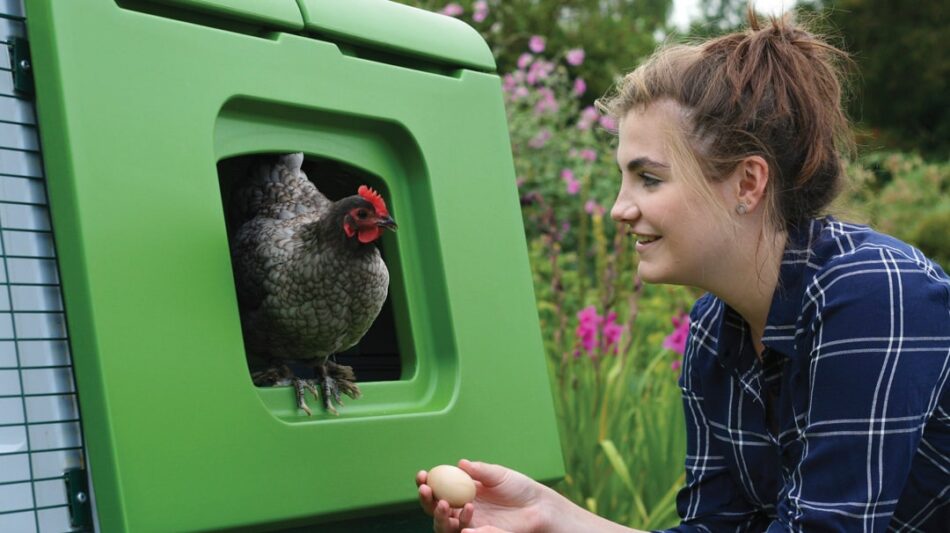
This entry was posted in Chickens on April 11th, 2019 by linnearask
Any cat owner…sorry, we mean servant… will know these struggles all too well. If you think of a crazy cat lady while reading these, make sure you name and shame them on social media using #OmletPets.
After swearing you would never let your cat on the bed, your cat now spends more time in your bed than you do, including under the covers.

You also frequently wake up with your cat lying on you, your pillow, right by your face, across your feet etc.
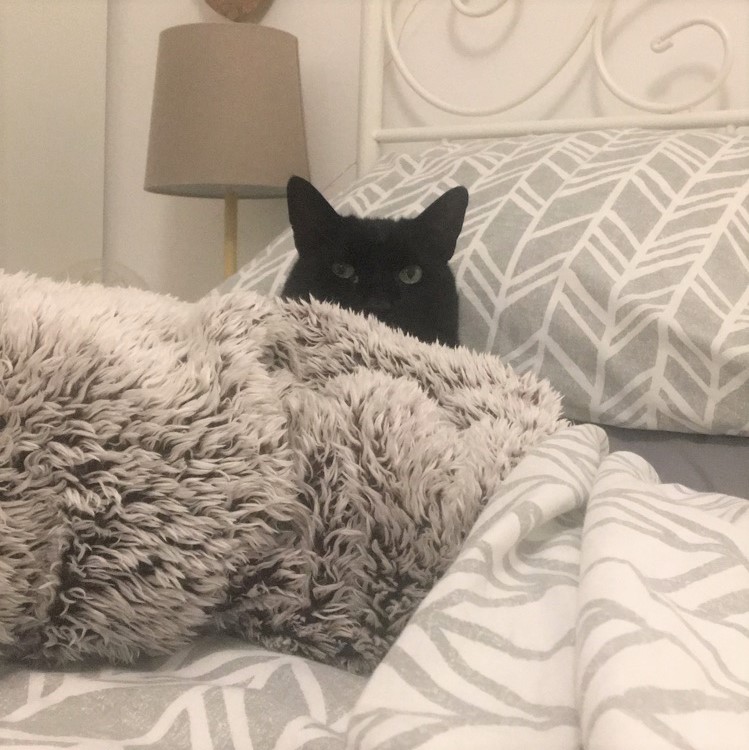
Your cat demands to have breakfast and dinner brought to them. And you give in. Every. Single. Time.
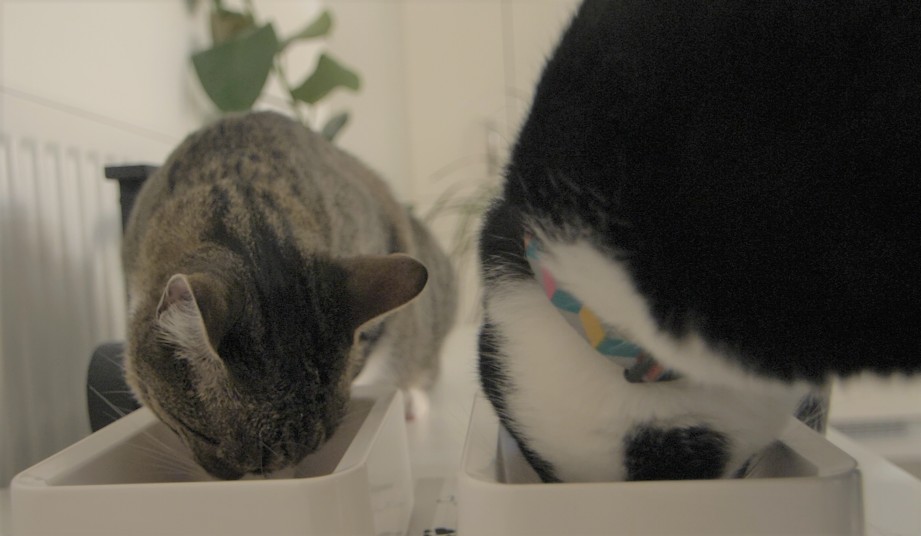
Sternly telling your cat “no” results in your pointed finger being swiped by sharp claws, even if they were in the wrong. Cats are never in the wrong.

You have bought multiple toys which your cat has never touched…
“But the toilet roll is so much fun! Ooo – look a hair band! Packaging? MY FAVOURITE!”
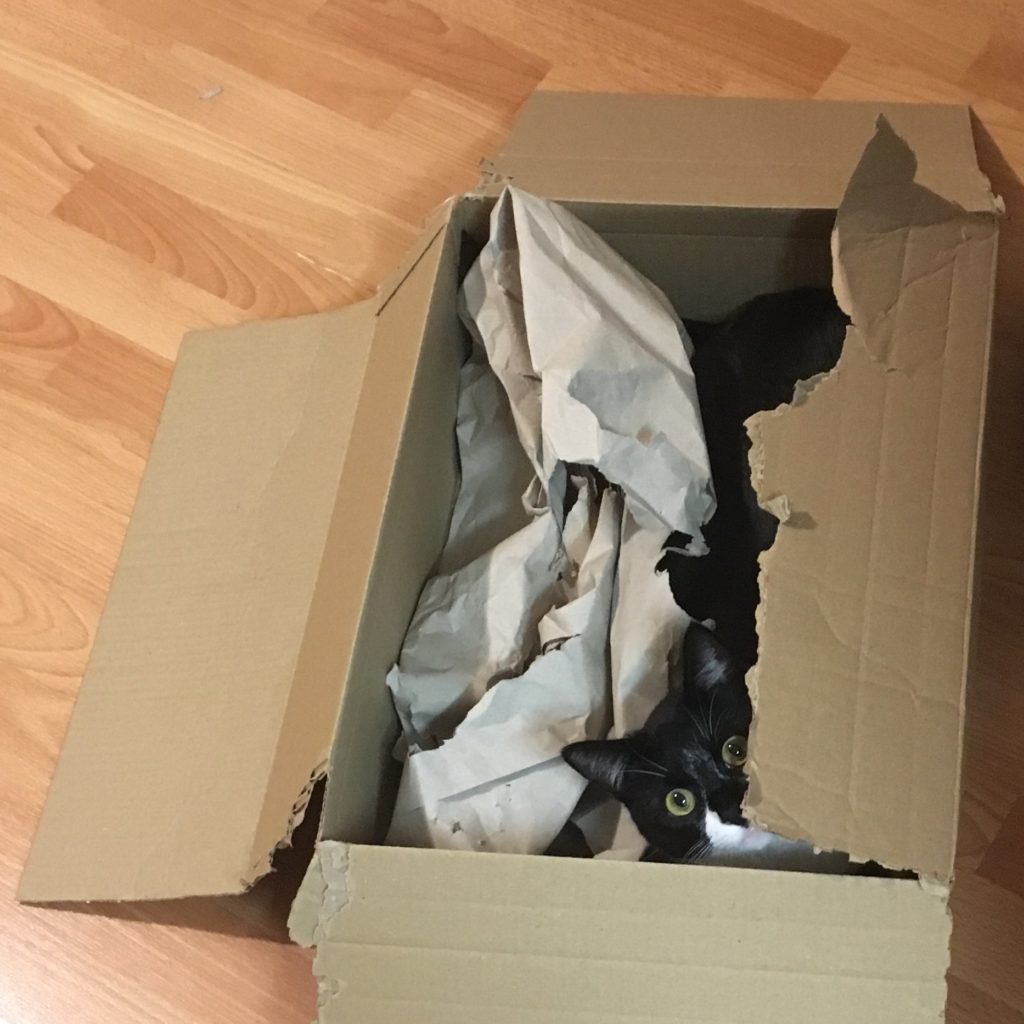
Who needs an alarm clock? You have a hangry cat!
“What do you mean 5am isn’t breakfast time? Get up!”

“If I want to play in the sink – I will play in the sink – don’t even THINK about moving me.”

You still can’t help but love your cat no matter what they do! They do own you after all!

This entry was posted in Cats on April 1st, 2019 by linnearask
Nathalie is the owner of the Instagram account My Backyard Paradise. Together with her husband and their three teenage daughters she runs her own ‘mini backyard farm’ in Belgium. The beautiful pictures she shares with her Instagram followers show that this truly is a backyard paradise. In June 2018 Nathalie decided to extend her mini farm with three ex-battery hens. Follow their journey to recovery in the two-part photo diary she kept for us. You can find part one here.
Week 3
The chickens are still eating an Alfamix mixture, a very rich grain blend with pellets and amphipods, and layers pellets. It’s time to further reduce the layers pellets (this was the only feed they had before we rescued them). For one month we will only give them Alfamix, then they will get the same food as our other chickens. Our chickens also always have access to a large meadow where they can find lots of extra food.
It’s also time to do something about their nails. Usually it’s better not to cut chicken nails, they just have to wear down. But the manure stuck under their nails needs to go. We soak their feet in lukewarm water and wash off the manure. This takes more than half an hour per chicken. In the meanwhile our ducks decide to help us and bathe in the water! As a reward we give the chickens a treat afterwards. It’s strawberry season, so I cut some strawberries into small pieces. My husband says the chickens are still ignorant, they are not used to anything and do not know how to eat a whole strawberry. But they do like the small pieces, they finish them in no time. Slowly we introduce more variation into their diet. Our chickens always get a decent amount of fruits and vegetables, kitchen scraps, leftovers from our children’s lunch boxes etc. We’d rather give it to our chickens than putting it on the compost heap.
We are down to two eggs per day. One chicken stopped laying completely, but we don’t blame her. It’s nature and we have to respect it.
This week it rained for the first time in a long time. Fortunately, I have a very caring daughter who wants to make sure the chickens look for shelter. When she checks on them she finds them in their run, not moving and soaking wet. When she comes back in she’s also soaking wet. She tells me she put the chickens in their Eglu and closed the door “because otherwise they will never learn, mum!”. Our children are really interested in our new chickens and they think it’s terrible how laying hens are treated by the industry. They tell me that next time we have to save 50 chickens! But I don’t think our neighbors would agree with that. It’s important our children learn that nature has a rhythm, and that chickens lay fewer eggs during winter. But this doesn’t mean they have to die! We will just eat less eggs and have to remember to store eggs in the freezer so we can use them for cakes later on. We certainly will not buy any eggs this winter!
Week 4
Our chickens really start to get to know us and they know when we will bring them treats. It’s now time to introduce them to the rest of our chicken family. Our chickens have not been allowed to free-range since the new chickens arrived. The risk that they would transmit parasites was just too high. But now they are allowed to run free again. And they are very curious to meet these three brown newcomers! The new ladies on the contrary are not too sure about this and stay close together in the middle of their run. We will spend this week introducing them to each other. Eventually we want to keep them all in the same large chicken coop. In no time they are used to the other chickens and don’t even seem to notice anymore when ten other hens scratch around their run.
Since they are now part of our extended chicken family we have to come up with names for the ladies. This is something we always decide as a family. We decide to go with names of the Belgian Royal Family. Overall, they will be our best laying hens, so they deserve some respect. We name them Louise, Elisabeth and Mathilde. They are not scared anymore and eat from our hands. It helps when you talk to them softly, as they start to recognize your voice and associate it with food. Besides vegetables we now also feed them scraps like rice and pasta, which they really seem to enjoy. And they still give us two eggs every day!
Second month
It’s finally time. We move the Eglu to the orchard, our chickens’ playground. We open the door of the chicken run. Our ladies stay inside, but our greedy Faverolle cannot wait to taste their feed and unsuspectingly enters the run. Immediately the three chickens attack. My children are shocked, they did not see this coming! I don’t worry too much since I know they’ll soon sort themselves out and are now strong enough to defend themselves. We just have to give them a few days to get used to each other.
They then take off to discover the orchard, but stay together all the time, and the other chickens don’t come near them. But it is time for them to sleep in the big chicken coop with the other chickens. At night, when it’s already dark, we take them out of their Eglu and put them on a perch in the big coop. The best time to do this is at night when it’s dark, so they won’t start fighting. This way the chickens will also all have the same smell in the morning. We keep the automatic chicken door closed for 2 days. This will enable them to sort out the pecking order and it will give them time to get used to their new home.
The transition actually goes really well. But they don’t let the rooster come near them! They are clearly higher in the pecking order than him! After two days we open the door of the chicken coop and allow everyone outside. The three ladies are slightly hesitant but eventually decide to have a look outside to see what the other chickens are up to. The only problem with the three chickens is that they like to stay out late, after the door of the automatic coop has already closed. My husband takes a flashlight to look for the chickens and puts them in the coop with the other chickens. But we can’t do this every night… We’re going on holiday soon and we want the chickens to go inside the coop by themselves. Instead of putting them in the coop we just manually open the door again when they want to get in. After a few days they enter the coop before the door closes. We can now go on holiday and don’t have to worry anymore!
I notice that since they’ve decided to sleep inside the coop, they’ve really found their place in the group. They even sleep on the highest perch. We notice the amount of eggs has really decreased. We just find one egg per day, which is strange since we hear two chickens clucking. Our youngest daughter decides to keep a close eye on the chickens. After spending half the day in the orchard, our daughter proudly tells us she found out where one of the hens is laying her eggs. There is a hidden nest! A true treasure with seven eggs in it! After removing the eggs and twigs, this hen also decides to lay her eggs in the chicken coop.
Three months later
We split our holiday in two so we can check on our chickens and collect their eggs. There is a fox in the neighborhood, so we are scared every time we come back home. But they’re all still there! We have an automatic poultry drinker, they have plenty of food in their feed bucket, and with all the plums, peaches and apples falling from the trees there’s also more than enough variation! There’s nothing better than a bunch of happy chickens and a bucket filled with colorful eggs. Now all of our chickens are allowed to free range in the garden when we are home. The three ladies are now the most adventurous. Our other chickens never noticed the compost heap but the three ladies have already found it (and they help mixing it a little bit). The only chickens that sometimes enter the kitchen are these three. And when we have dinner outside, one of them will sometimes just jump on the table. They surely provide entertainment!
We are really relieved and also proud the three hens have adjusted so well. It was a difficult summer for the animals. It was really warm and there was no rain to cool them down. But with the right care and some extra attention it all went really well.
The three hens are proud chickens now, and are definitely are part of our chicken family. They are very tame, and they are always the first to come to us so we can pick them up and cuddle them. They are very curious and love colorful shoe laces. Their egg production has stopped because they need all their energy to renew their feathers. We give them protein muffins to help them with this.
Just a few weeks from now they will have beautiful shiny feathers and the only thing that will remind us of their past will be their trimmed beak!
If you’re thinking about rehoming ex-battery hens or would like to support an organisation that works to help chickens in need, contact our friends at the British Hen Welfare Trust. The BHWT is a national charity that re-homes commercial laying hens and encourages support for British free range eggs.
This entry was posted in Chickens on April 1st, 2019 by linnearask













 The Great Escape
The Great Escape
 This post was written by John Wood at
This post was written by John Wood at 













